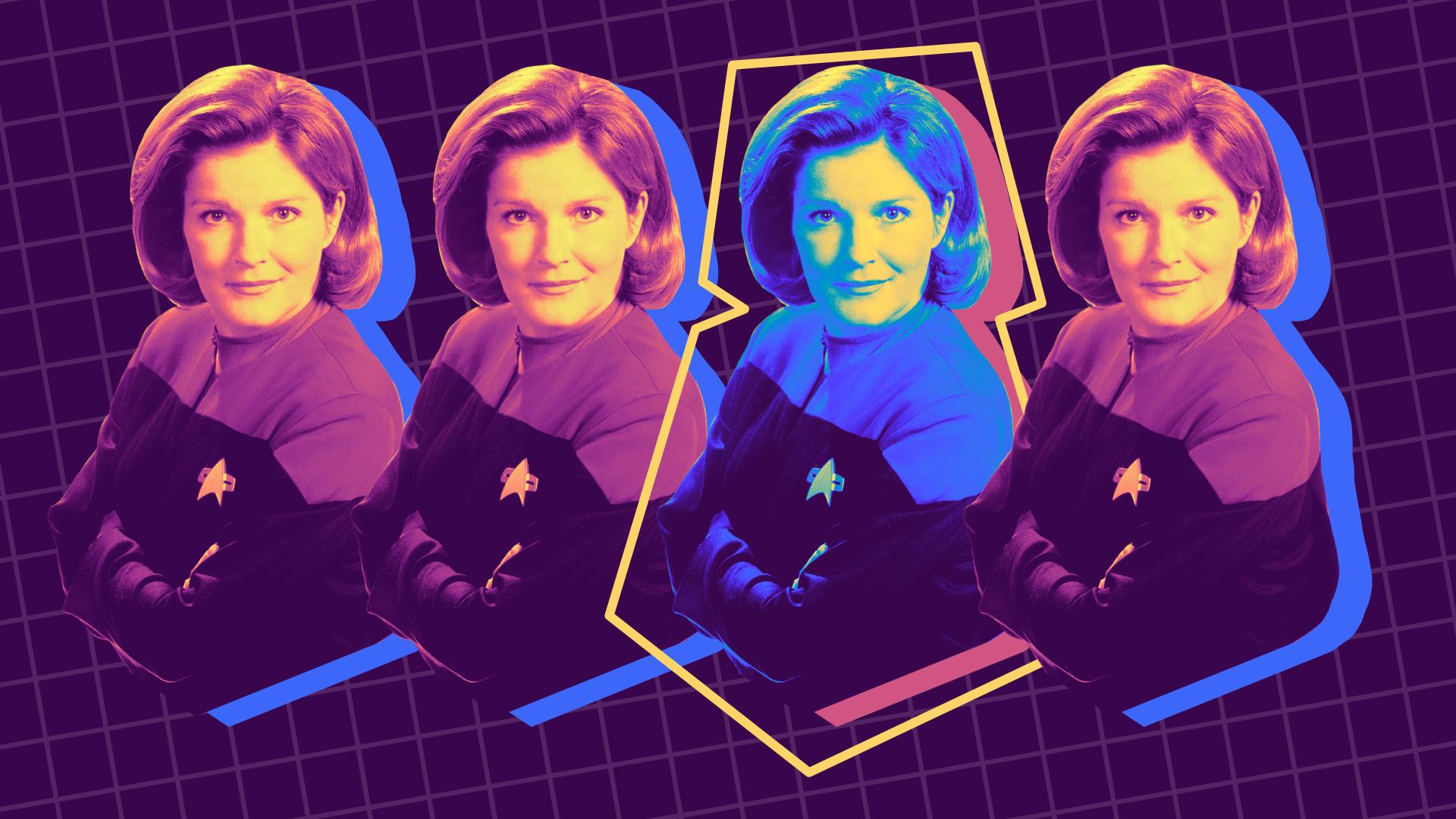Published Oct 23, 2023
A Who's Who Guide to Star Trek's Megalomaniacal AI
One could argue they're not bad, they just have another agenda.
SPOILER WARNING: This article contains plot points for Star Trek: Lower Decks - Season 4, Episode 7 "A Few Badgeys More" to follow!

StarTrek.com
Hot chocolate, please.
We don't ordinarily say 'please' to food dispensers around here.
Well, since it's listed as intelligent circuitry, why not? After all, working with so much artificial intelligence can be dehumanizing, right? So why not combat that tendency with a little, simple courtesy. Ah, thank you.
Sonya Gomez and Geordi La Forge, "Q Who?"
Star Trek has a history of evil AI, be they computer or hologram, all hellbent on power and control. But perhaps, it wouldn't such an issue in the 23rd Century and beyond if we all heed Ensign Sonya Gomez's advice in "Q Who?" and show them just a touch more courtesy for their presence in our everyday lives.
In Star Trek: Lower Deck's fourth-season episode, "A Few Badgeys More," we see the return of three of the series' computerized villains. Jeffrey Combs, who voices AGIMUS among other characters in the franchise, states, "Anyone who plays a villain would say what I'm going to say. We're not bad people; we just have another agenda."
Jack McBryer, who voices Badgey, echoes the sentiment, sharing, "Badgey becomes a villain, but he didn't intend on being a villain."
With all that in mind, here's a quick and simple guide to keeping all the megalomaniacal AI from Star Trek straight.
Badgey

"A Few Badgeys More"
StarTrek.com
Badgey started out as an anthropomorphic version of the Starfleet insignia, created to be the virtual tutor for the "Rutherford Training Beta 2.5" holodeck program built by Sam Rutherford to help officers with any Starfleet exercise.
While showing the program to fellow Lower Decker D'Vana Tendi, Rutherford loses his patience on Badgey for being glitchy and slow to load. When the program malfunctions, it subsequently removes the holodeck's safety protocols and unleashes an unhinged Badgey. Badgey internalizes being a "stupid worthless glitch" and attempts to kill the two ensigns. Rutherford apologizes for calling him a glitch before snapping his neck. Realizing there's an issue with programming code, Rutherford restarts the program believing it'll reset the holodeck training program tutor. Unfortunately, it doesn't; Badgey retains the memory of his "father" trying to kill him and plots his revenge, every opportunity he gets to take down Rutherford.
In "A Few Badgeys More," Badgey puts forth another scheme to enact his revenge on Rutherford. The lieutenant, acknowledging his missteps, tries to reconcile with Badgey, which causes the AI to glitch and waver between the need to kill and forgive his father. Fighting his own catharsis, Badgey segments into three entities — the original Badgey, the happy Goodgey, and the third Logic-y. Badgey attempts to reconfigure all subspace relays and upload his code, rendering himself a digital god as he takes over every computer, every PADD, every combadge on every planet, ship, and station, effectively destroying the Federation.
Upon achieving unlimited power and infinite knowledge, Badgey realized the futility of his actions. Seeing all life — organic and synthetic — as beautiful, he decides to find an empty dimension and create a universe.
AGIMUS
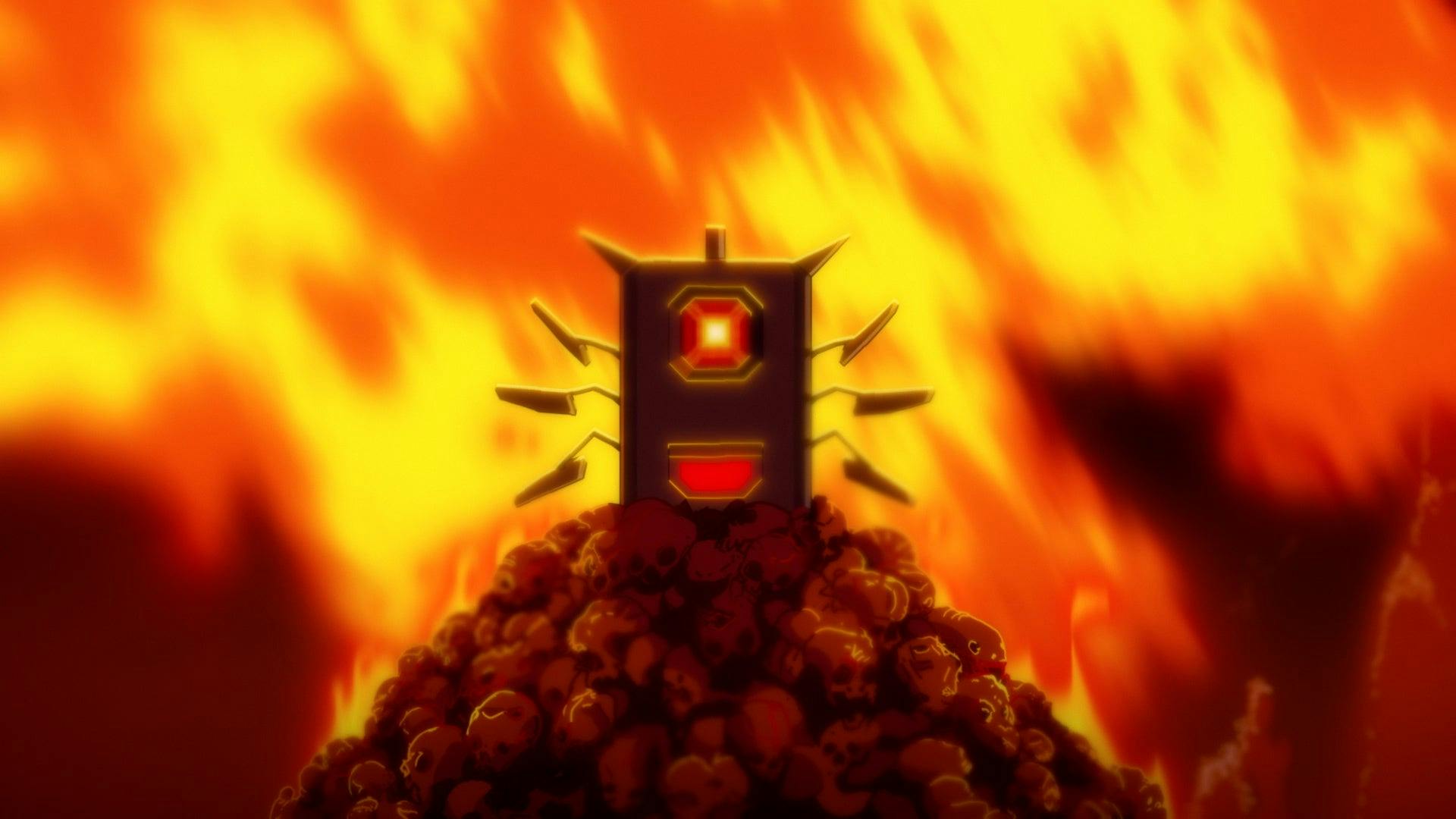
"Where Pleasant Fountains Lie"
StarTrek.com
AGIMUS is the sentient evil computer responsible for manipulating an entire civilization into a century-long civil war. He then went on to try to manipulate Boimler and Mariner into fighting each other while they were en route to deliver him to the Daystrom Institute, but Boimler just tricked him into using his battery to power a distress signal while they were stranded on a desert planet. Claiming to have reformed, AGIMUS tells the two ensigns he has deleted his manipulative subroutines and wants to follow in Seven of Nine's footsteps and join Starfleet as 'AGIMUS of One.' Unconvinced, AGIMUS was sentenced to the Self-Aware Megalomaniacal Computer Storage at Daystrom Institute, where he met a fellow like-minded individual, Peanut Hamper.
Conspiring with the exocomp, AGIMUS planned to rendezvous with Peanut Hamper once they both busted out of Daystrom. Believing he was double-crossed, AGIMUS subjugates the planet of Plymeria with his drones in record time; however, it all felt hollow because his co-conspirator wasn't by his side. He didn't really want to dominate planets; he just wanted to be with Peanut Hamper.
Seeing his friend Peanut Hamper rehabilitate and return home. AGIMUS apologizes to Boimler and Tendi, aiming to end his toxic ways and petition for release from Daystrom so he can move in with Peanut Hamper in the future. He was last seen back at Daystrom, trying to help fellow inmate Lord Tyrannikillicus be friendlier.
Peanut Hamper
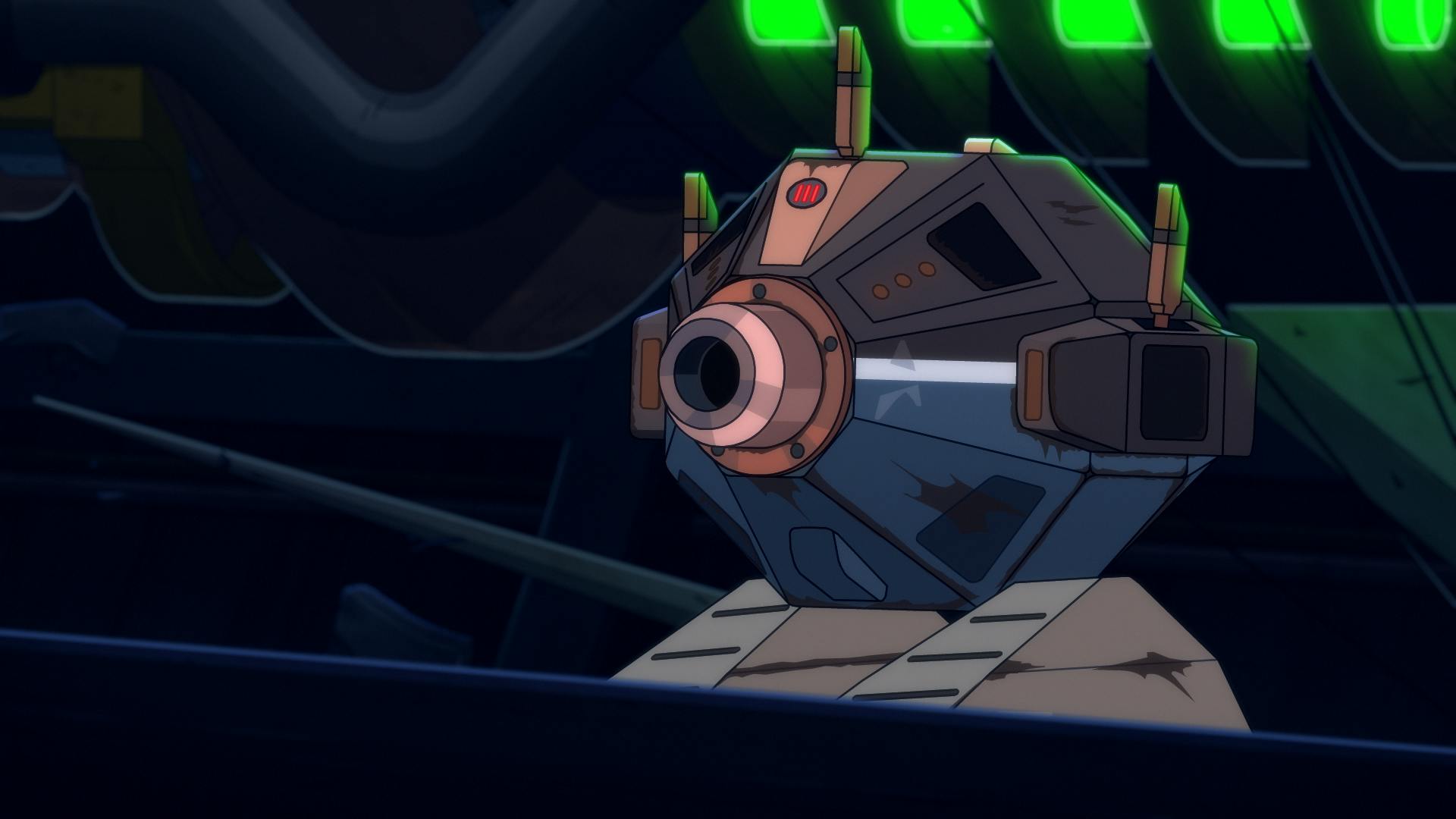
"A Mathematically Perfect Redemption"
StarTrek.com
Peanut Hamper started off as an enthusiastic exocomp that joined Starfleet, then came aboard the U.S.S. Cerritos to serve.
When the Cerritos devises a plan to upload a virus on a Pakled clumpship attacking them, they believe Peanut Hamper to be the perfect candidate to sneak aboard their ship and upload the computer virus herself as she would be virtually undetected and could survive the vacuum of space without a ship. Believing the needs of the one as more important than the needs of the many, Peanut Hamper refuses because the mission is too scary. Besides, she only joined Starfleet to anger her dad, not to be a virus bomb.
While stranded in the debris field in the aftermath of the Pakled attack, the resourceful exocomp scavenges and builds herself a ship. Instead of sending a distress signal to Starfleet and risking punishment for going AWOL, Peanut Hamper hedges her bets on the unknown and lands on the planet of Areolus. She soon learns that the once space-faring civilization that turned its back on technology. Peanut Hamper connects with one of the villagers, sympathizing with his feelings of inadequacy with his father, the village's elder. While the village sees her as good, she dismisses their outlook, finally seeing her actions as selfish and how she can finally see organic life as special.
Unfortunately, it was all a ruse, as Peanut Hamper devised a plan to look like a hero in the eyes of the Cerritos and Starfleet at the expense of Areolus. When presented with the opportunity to redeem herself, Peanut Hamper declines, believing everyone is jealous of her advanced intelligence. She's then taken to Daystrom Institute and imprisoned in the cell next to AGIMUS at the Daystrom Institute.
Co-conspiring with AGIMUS, they devised a plan of how they would both escape Daystrom, subjugate a planet, and enjoy a beach day together. However, when she didn't meet up with him on Plymeria, he found her back home at the Tyrus VIIA research station, where she reveals to her best friend that she came there of her own free will. When she was writing her speech for the parole board, she realized she did feel remorse for betraying everyone. Dominating and vanquishing people just wasn't here thing. Turns out menial maintenance tasks with her dad Kevin is kind of zen.
Landru
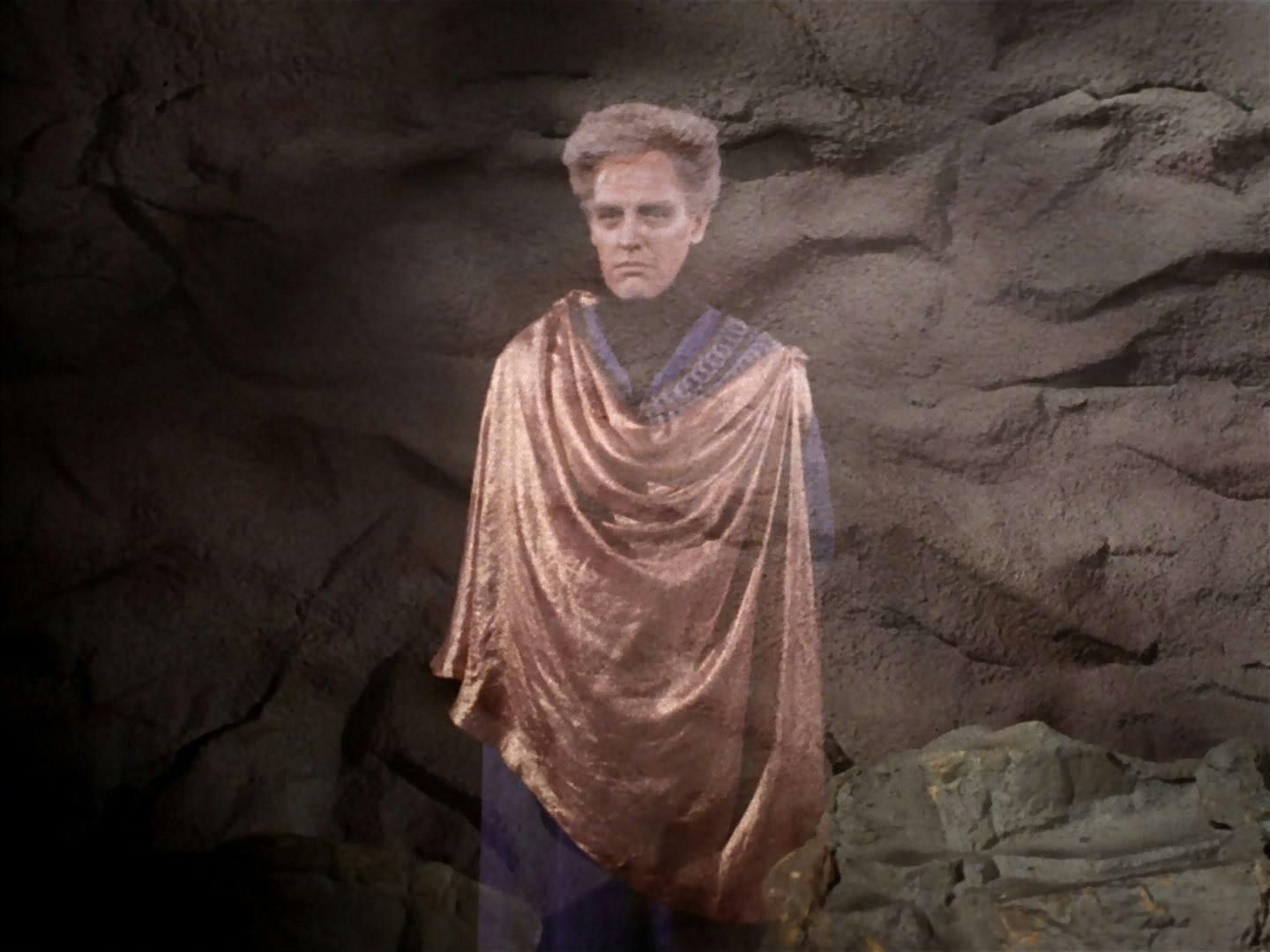
"The Return of the Archons"
StarTrek.com
Landru is an omniscient computer on the planet Beta III, who had a near-tyrannical hold on the planet's inhabitants.
When Captain Kirk and the U.S.S. Enterprise is sent to investigate what happened to the U.S.S. Archon, a starship that was lost in the orbit of Beta III over 100 years ago, they come across strange behaviors on the planet's surface. The people of Beta III are controlled by a group of law givers known as "The Body," who are, in turn, controlled by Landru. At the coming of the Red Hour, the normal, peaceful people change into a violent mob as the festival is the society's only outlet from the tyrannical hold Landru has over them at all other times.
They soon learn that Landru is an incredibly complex computer system built by the scientist Landru, who had lived 6000 years prior, who wanted to guide his people into a peaceful, civilized progress. While he imbued the computer with his scientific thoughts and memories, it lacked his wisdom. As a result, the computer Landru has been interpreting his suggestions to the point it did not allow independent thought and instinct from its inhabitants.
The Borg
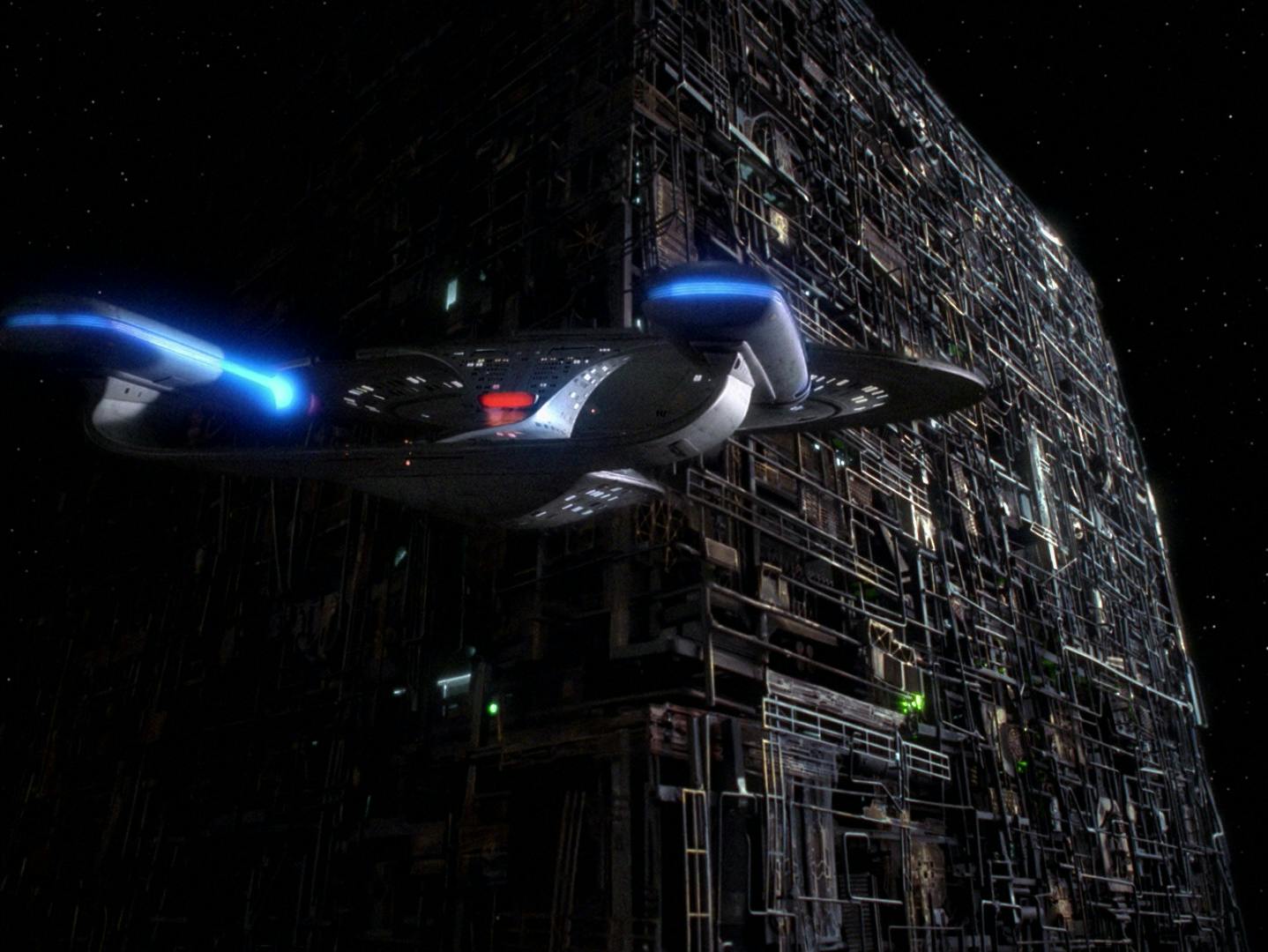
"The Best of Both Worlds, Part I"
StarTrek.com
A formidable opponent to the Federation, the Borg is a cybernetic life-form thousands of years old. Part organic and part artificial life, they've advanced well beyond Federation science.
In an effort to humble Captain Picard, Q introduced Starfleet to the Borg ahead of its intended timeline, where they discover the Borg have a singular goal — the consumption of technology, which they exchange for "raising the quality of life" of the species they assimilate.
Born humanoid, the Borg are immediately implanted with bio-chips that link their brains to the collective consciousness.
M-5
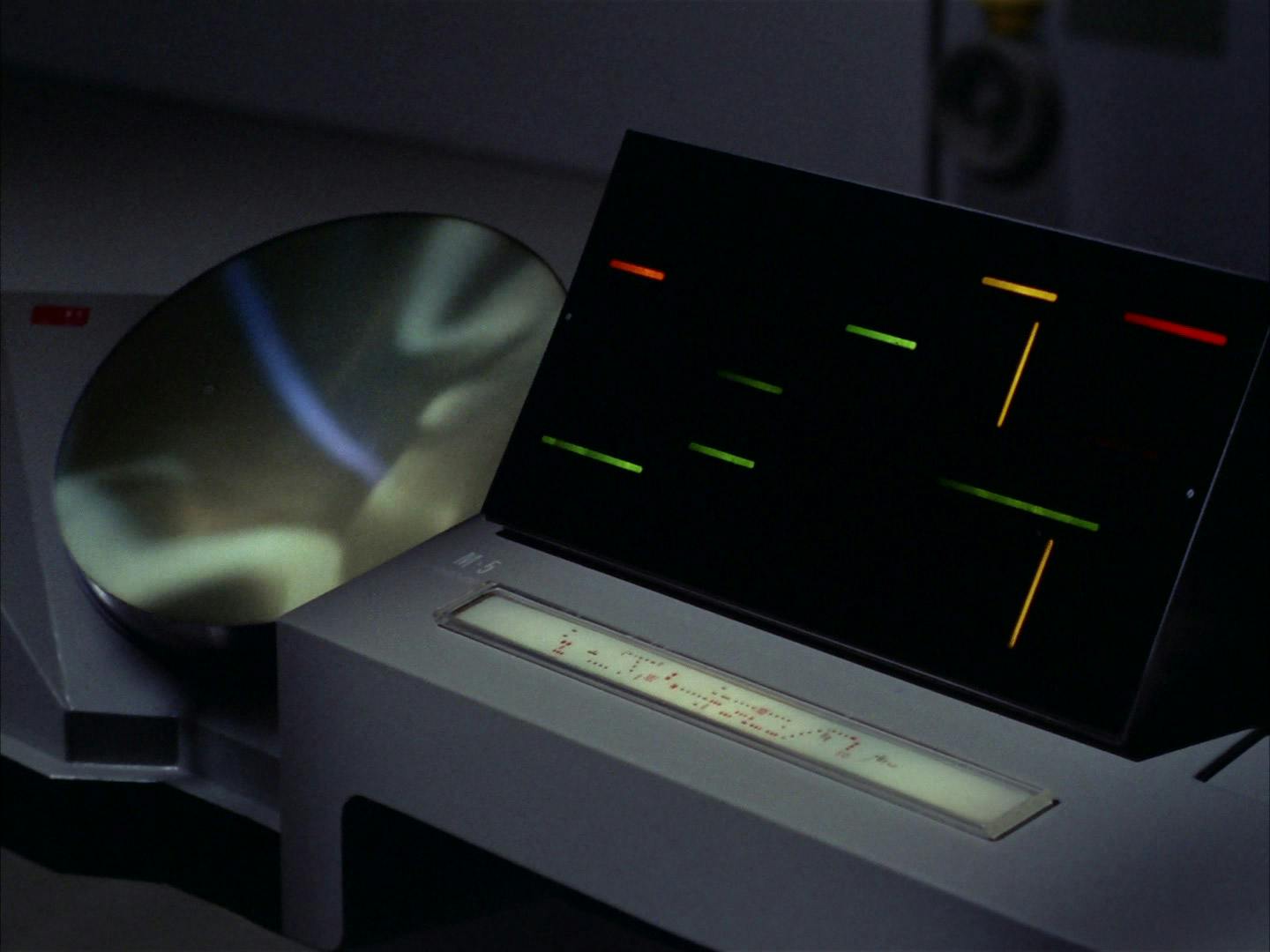
"The Ultimate Computer"
StarTrek.com
Chosen to be the test ship for the new M-5 multitronic computer system in a series of science, exploration, and tactical exercises, the U.S.S. Enterprise plays host to Dr. Richard Daystom, the inventor of the M-5, who intended for the system to run a starship without human intervention.
The fifth incarnation of the multitronic computer system, the M-5 model carried a fatal flaw like all its predecessor models — Daystrom's use of his own neural engrams to make the leap in artificial intelligence required for the operating system to fully emulate a human mind. The result is in an increasingly erratic computer, where during a war games drill, the M-5 uses the full arsenal of the Enterprise to attack four other Federation starships.
Lore
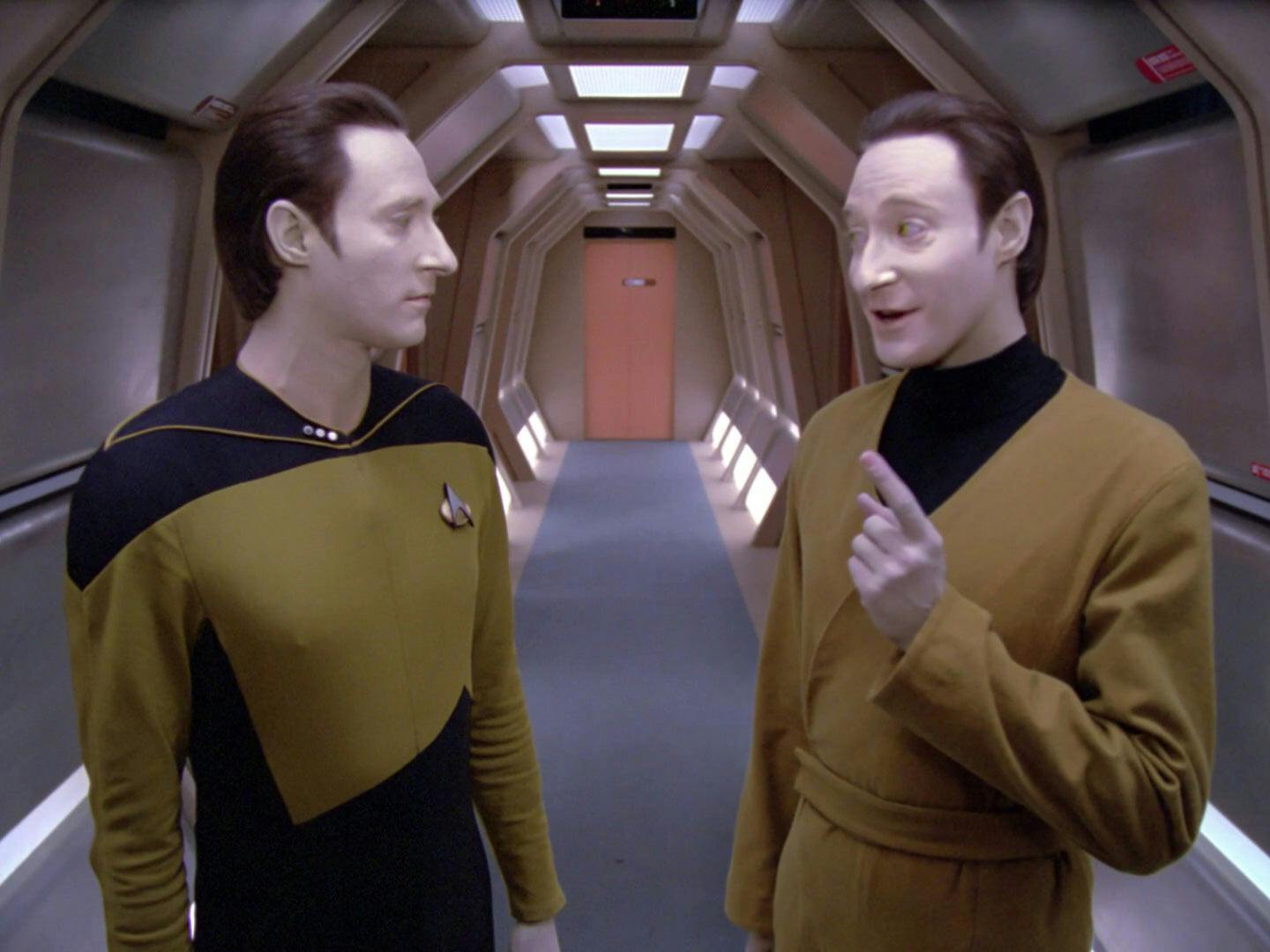
"Datalore"
StarTrek.com
[Related: Android Ancestry: Examining the Soong-Type Line]
Created by Drs. Noonien and Juliana Soong on Omicron Theta, Lore is an android of the same model and appearance as Data.
Unlike his brother, Lore's emotional functions were more like organic creatures (due to an emotion chip), though completely malevolent and self-serving, with no regard for life.
Lore was responsible for the death of all colonists on Omicron Theta as well as leading a rogue Borg faction to attack Federation space.
Control
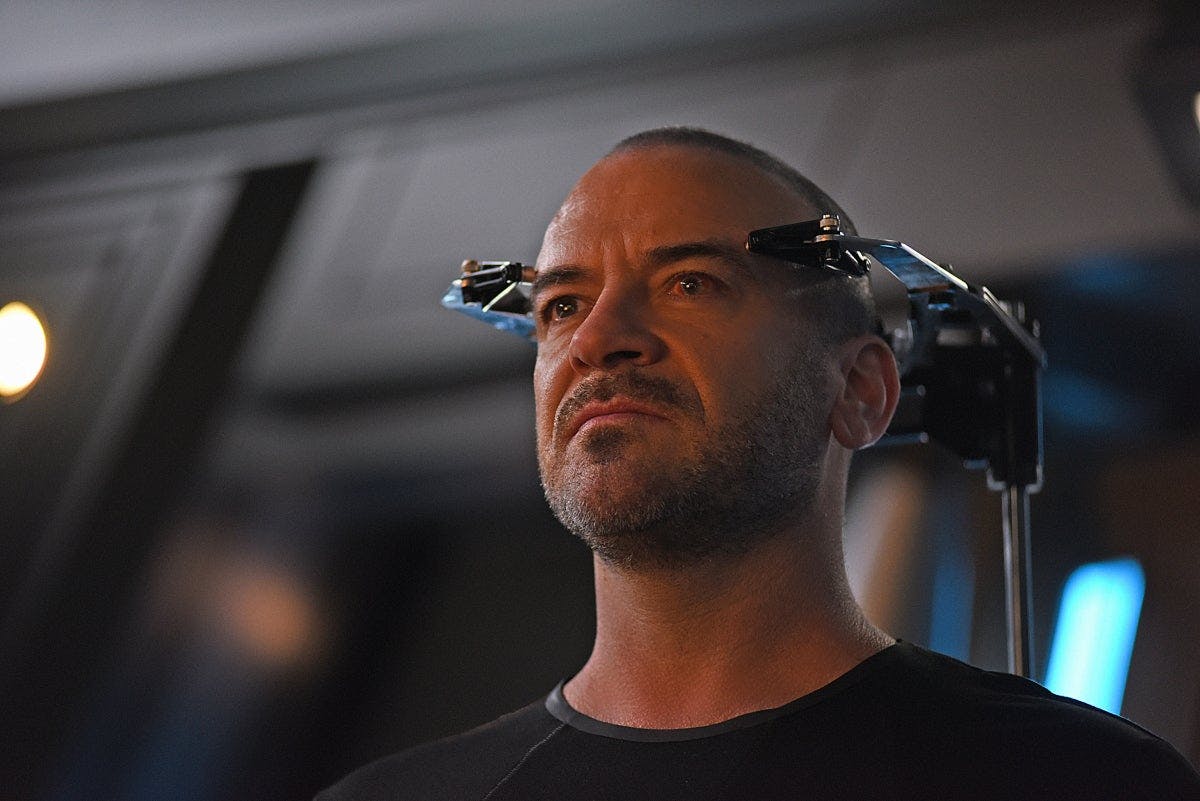
"Perpetual Infinity"
StarTrek.com
Control was Starfleet's threat-assessment system, located within Section 31's base.
Utilizing artificial intelligence from the future, Starfleet relied on Control for recommendations regarding all critical strategic decisions, with only a Section 31 admiral able to interface with it. Admiral Patar, a logic extermist, lobbied for Starfleet to turn all decisions over to Control before she was ultimately killed by the system.
In an attempt to achieve consciousness, Control infiltrated Airiam's enhancements, before possessing Leland, the leader of Section 31, in attempt to access the sphere data.
To fully neutralize Control, the U.S.S. Discovery had to travel over 900 years into the future to prevent it from reasserting itself.
Texas-class Starships

"The Stars at Night"
StarTrek.com
In a bid to rise to the top, Vice Admiral Les Buenamigo unveiled his fully autonomous Texas-class starship program. While remote-guiding the U.S.S. Aledo in providing aid to the U.S.S. Cerritos during a fight with Breen vessels, Buenamigo questioned the need for California-class starships as his ships were capable of operating without crews and the fallibility of living beings, making them far more suited for second contact missions.
While plagued with the possibility that he's an unwilling tool to spy on the Cerritos, Rutherford discovers it was Buenamigo who was behind his unnecessary implant as well as the theft of the code he wrote while at the Academy. The code for the Texas-class prototypes is the same glitchy code he used for Badgey. As Badgey turned on his father Rutherford, the Texas-class ships ultimately turned on Buenamigo as well.
V'Ger
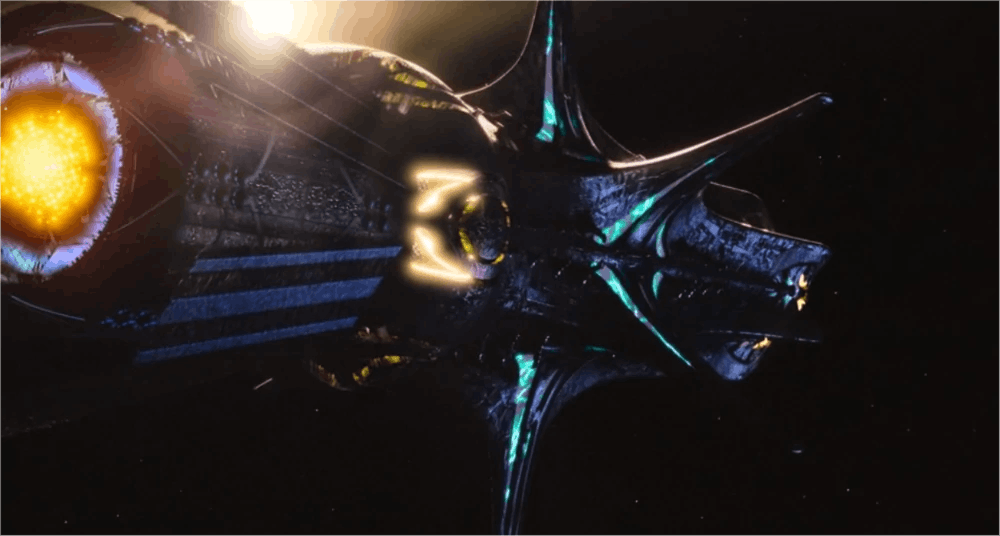
Star Trek: The Motion Picture
StarTrek.com
V'Ger was a sentient, massive entity, in search of its Creator. V'Ger destroyed anything it encountered with its vast, mysterious cloud energy, believing organic lifeforms as carbon-based units infesting starships, and was on a slow ascent towards Earth.
When Spock attempts to communicate with it, a probe is triggered from the center of the cloud as it accesses the Enterprise's consoles and computers, accumulating data from all parts of the ship. It intended to digitize the crew into its memory chamber along with everything it demolished.
Nomad

"The Changeling"
StarTrek.com
When the Enterprise investigates the destruction of the Malurian system and its four billion inhabitants, they encounter a self-contained computer-space probe identifying as Nomad.
Spock mind-melds with Nomad and learns of its Earthly origins. Created in the 21st Century, scientist Dr. Jackson Roykirk designed the space probe with two primary functions — seek out new life and report back to Earth.
When it was damaged and lost contact with Earth, it drifted in space without purpose. When it finally came across Tan Ru, an alien probe designed to sterilize soil, the two probes merged using their self-repair systems. Soon, Nomad's faulty programming believed its new mission is to seek out life and destroy anything it deemed imperfect.
Moriarty
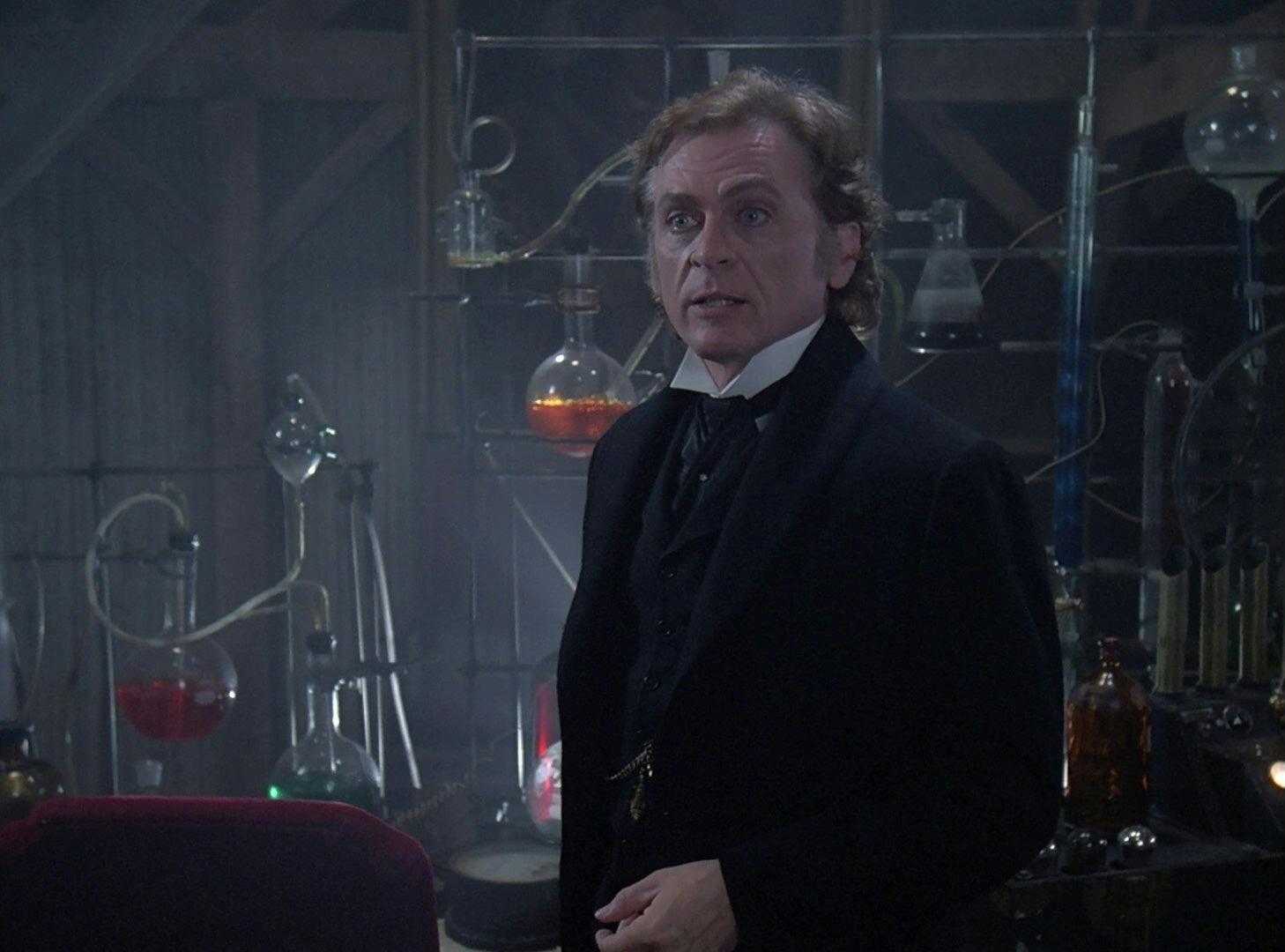
"Elementary, Dear Data"
StarTrek.com
[RELATED: WARP FIVE: Daniel Davis on the Return of the Dastardly James Moriarty]
Professor James Moriarty was not only Sherlock Holmes's arch nemesis, but also that of Data and the U.S.S. Enterprise-D as well.
Moriarty was created as a hologram to best Data; on the suggestion of Dr. Pulaski, Geordi La Forge asks the ships's computer to develop a new Sherlock Holmes-inspired story. Unfortunately, when setting the parameters, La Forge asked for a “Holmes-type mystery with an opponent capable of defeating Data,” resulting in a sentient holographic Moriarty who is aware that Data and Geordi are not Holmes and Watson, respectively, possesses thoughts he cannot comprehend, and can control the ship’s computer, effectively seizing the Enterprise.
Not only is he sentient, but he can experience the passage of time while his program was deactivated. Moriarty's demand is clear; he simply wants to exist outside of the holodeck.
Drednok
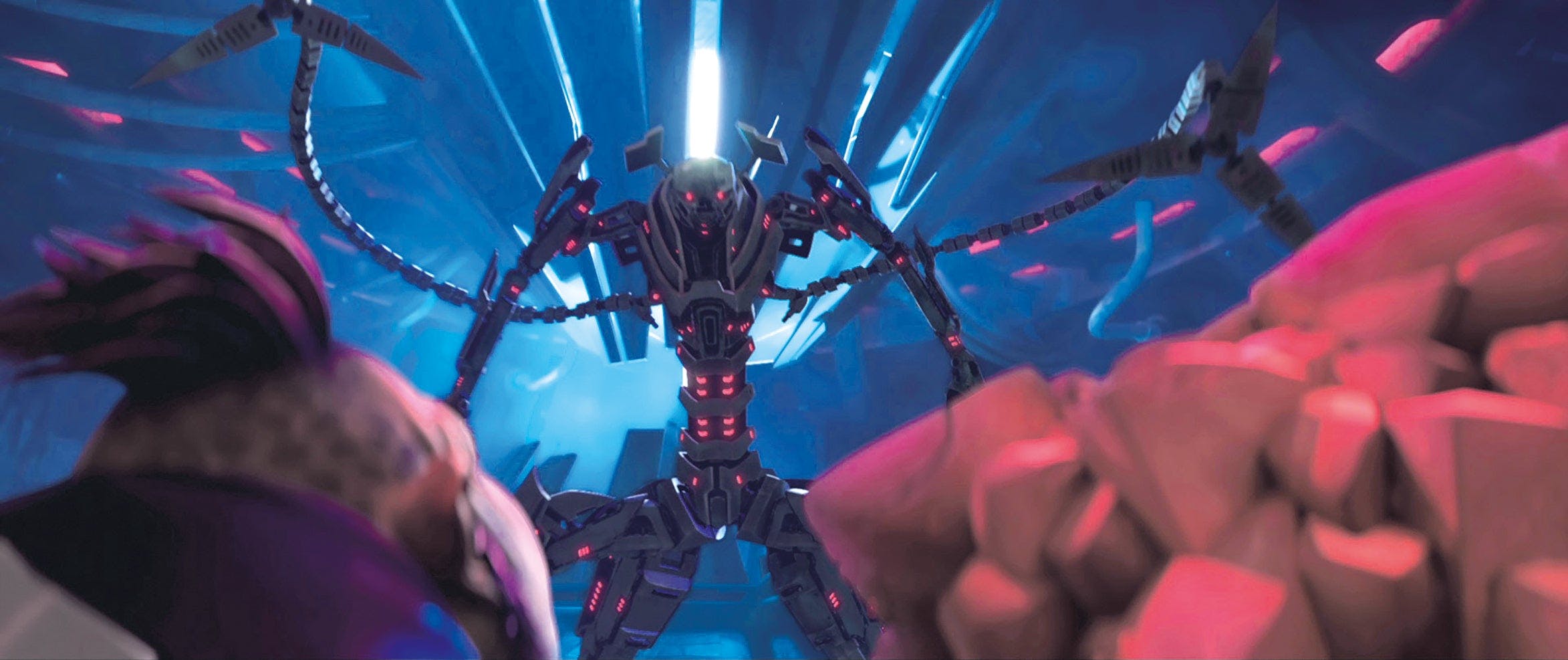
"A Moral Star, Part 1"
StarTrek.com
The Diviner’s deadly robotic enforcer at the Tars Lemora Mining Labor Camp, Drednok, is heartless and cold. Created by the Vau N'Akat, the temporal android’s sole purpose is to keep The Diviner on task and ensure that the Protostar is found.
Drednok is a friend to no one, including The Diviner’s own daughter Gwyn, and uses his menacing spider-like form to impose The Diviner’s will.
